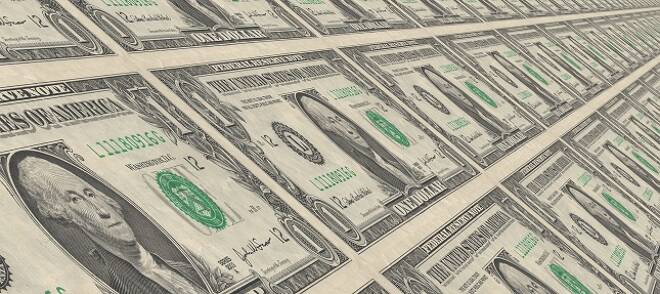Advertisement
Advertisement
Yellen the Hawk and the Dollar
By:
Yellen came to the rescue of the Dollar on Wednesday, the FED Chair standing by the FOMC’s projections, highlighting that both the labour market and
Yellen came to the rescue of the Dollar on Wednesday, the FED Chair standing by the FOMC’s projections, highlighting that both the labour market and inflation are moving towards the FED’s dual mandate objectives.
Under normal market conditions we would certainly see the Dollar rally off the back of such hawkish sentiment, despite Yellen’s foot soldiers holding mixed views on the outlook for interest rates through the year, FOMC member commentary having picked up through the last 2-weeks.
The Dollar gains by the close on Wednesday have receded and perhaps materially is the EUR’s run through the early part of the day, the EUR currently up 0.30% at $1.06616, at the time of writing, the upside coming despite the ECB monetary policy decision and more importantly the press conference that follows, during which we are likely to see numerous questions on the asset purchasing program, the December minutes having indicated dissent in the ranks. Draghi will look to play down the dissent, but whether the markets are convinced is another matter altogether.
While the Dollar Spot Index may be telling a different story, currently down 0.27% at 101.02, the majors have taken a bite out of the Dollar, with Cable, the AUD and the Swiss Franc in positive territory going into the European session and it ultimately boils down to market fears of Friday’s inauguration speech, the uncertainty of what lies ahead continuing to grip the Dollar, despite solid economic data out of the U.S on Wednesday evening, December’s inflation figures in line with expectations, supporting the more hawkish outlook on U.S interest rates through the year.
Macroeconomic data out of the U.S this afternoon includes the weekly jobless claims figures together with December housing sector data and the Philly FED Manufacturing Index numbers for January.
While the manufacturing index is forecasted to weaken slightly in January, as was the case with the NY State figures, the markets are likely to brush aside any week numbers should the housing sector stats come out in line or better than forecast, the housing sector having been a barometer, in recent times, of consumer sentiment, reflective of the tight labour market and wage growth. Strong figures will provide the Dollar with some support, though as we saw on Wednesday, the focus on macroeconomic data has softened through the week, paving the way for the president-elect to restore order in the markets or perhaps cause disruption come Friday evening.
If Trump is looking for a weaker Dollar, he will certainly be cognisant of his influence on the global financial markets at present.
The outlook for the U.S economy remains positive, but may be tested in the months ahead should the president-elect deliver on his promises, the Chinese Premier having to step forward, talking of the need for global cooperation, supporting the concept of globalization at Davos this week, while also trying to address any immediate concerns, acknowledging a willingness to build a relationship with Trump and the new administration.
One thing is for certain, the markets will be looking to move beyond Trump’s inauguration, though it may not be so simple, particularly should Trump’s comments on the strength of the Dollar lead to a U.S president more influential on monetary policy than his predecessor, the FED Chair interestingly highlighting how the previous administration had played no hand in monetary policy decisions through Obama’s 2-terms.
About the Author
Bob Masonauthor
With over 20 years of experience in the finance industry, Bob has been managing regional teams across Europe and Asia and focusing on analytics across both corporate and financial institutions. Currently he is covering developments relating to the financial markets, including currencies, commodities, alternative asset classes, and global equities.
Did you find this article useful?
Latest news and analysis
Advertisement
